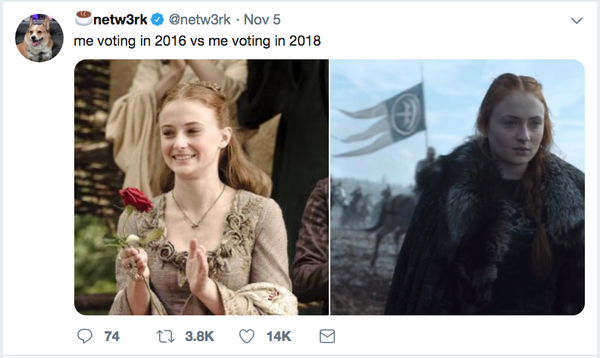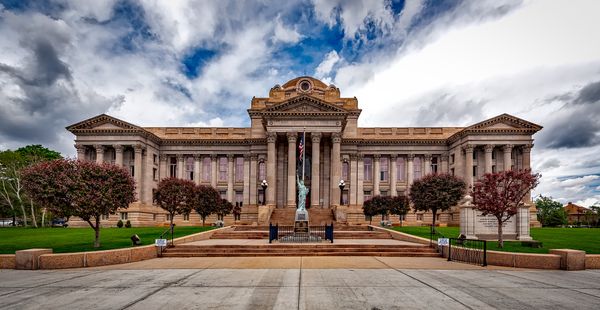In just about every field, there is a strong gender bias. For example, CEOs are generally men and nurses are usually women. Feminists seek to diminish the effects of these biases, and, oftentimes, bring an intersectional outlook into discrimination. These biases, whether about gender, race, or sexual orientation, are deep rooted in the history of the world. Our society and the general world view, has been dominated by straight, white males for quite some time, and it has effected the position that industries have taken toward looking for leaders. One social institution that has been deeply affected is art. Between paintings, sculptures, films, and plays, men have dominated the art world for as long as documented history can tell us. More recently, women have come into the spotlight, which leads to the question have women been able to break the glass ceiling of creativity or has society lowered expectations of what makes a great artist?
To dispel the notion of mediocrity in women artists, we must first understand the concept of genius. Immanuel Kant introduced the idea in his "Critique of Judgement". Genius can be described as, “the mysterious quality an artist has that makes their work great.” It often used to excuse an artist’s crazy behavior, like Van Gogh cutting off his ear. However, many of these outlandish acts would never be able to be committed by a woman. For example, could you imagine a woman, at a showing for her own art piece, peeing in the fireplace in front of everyone? That’s exactly what Jackson Pollock did at Peggy Guggenheim’s house. Christine Battersby argues that the craziness, or rather passion if you want to look at it positively, comes from the end of the eighteenth century when societal views of the roles of men and women were shifting from Renaissance views. Before, women were seen as lustful, but now they were viewed as delicate and gentle. On the other hand, men became associated not only with intellect and reason but also imagination and passion. Because of this image, the notion of genius became intrinsically tied to men. Many philosophers criticized women’s ability to have genius saying they lack the passion as well as the discipline to control their emotions enough to channel it. Kant even went so far as to say that women must get any stroke of genius from their brothers or fathers. It seems as if there if a gender bias, it is socially constructed.
Linda Nochilin, author of the 1971 book "Why Have There Been No Great Women Artists?", sought out an answer to the gender bias in art. She claims there have been no female greats to compare to male artists like Michelangelo, Rembrandt, etc, and that there has been no collective “essence” of femininity in female artists’ works. While many people have argued that women just don’t have the unexplainable ability that men have to be creative geniuses, Nochlin introduces the “Myth of a Great Artist.” This theory states that people generally believe greatness can occur even in the worst of circumstances. However, as Nochlin points out, this is not the case. Artists need training and materials. If you take a look at the more famous male painters, they were more than likely to come from a specific social group and have artist fathers. Women artists were likely to come from the same upbringing, although it was less common for their fathers to encourage them to pursue art as more than a hobby.
Other social factors prohibited women as well. Since, traditionally, women were expected to take care of the house, they were discouraged from pursuing an education or a career. Once they started a family, women had too many responsibilities to be able to dedicate time for art. Even famed female artists had to struggle to balance art and family. “San Ildefosno potter Maria Martinez and the Hopi potter Nampeyo made pottery while attending household chores, child-care, and significant ritual responsibilities of Pueblo ceremonial society.” Other times, it was women’s own perceptions of themselves that restricted them from becoming one of the greats. Adelaide Alsop Robineau, leader of the arts and crafts movement and someone I’ve never heard of before, encouraged young women to make art as a way to gain the attention of men as if that was their only purpose and even went so far as to criticize feminists.
After finding a link between the production and consumption of art with power and control, feminist aesthetics was born to rid art of the patriarchy. Mary Devereaux, an American philosopher, introduced the idea of the “male gaze.” She claims that men and women have both learned to see the world through men’s eyes. Women look to men not only for status and privilege but also for their identity as the object of a man’s desire. In art, this means that men are the subject and women are the object. In the case of Robineau, this certainly holds true. The idea of the male gaze also explains why there are far more female nudes than male. Females aren’t any more beautiful than men are, they just happen to be what men are attracted to. Again, it’s a social construct.
Feminist groups have long been attempting to squash the idea of the male gaze. One such group was the Guerilla Girls. This group of women used ad campaigns to attack prestigious galleries and curators. They created comical posters - and, as philosophy professor and author of Art Theory: A Short Introduction Cynthia Freeland points out, women can be funny - to bring to light the issues women face in the art world. One poster, titled “How Women Get Maximum Exposure,” featured a female nude with a gorilla’s head and the text “Do women have to be naked to get into the Met. Museum?” The poster also pointed out that only of 5% of women in the modern art section of the Metropolitan are women while 85% of the nudes are female. Another ad, titled “Advantages of Being a Woman Artist,” listed “not having to deal with the pressure of success” as a key point. A third campaign consisted of a list of over 60 female and minority artists of which a curator could purchase one work from each artist for the same price of $17.7 million as one piece from Jasper Johns. The Guerilla Girls have also campaigned against the Tony Awards, the MoMA, and gallery owner Mary Boone. With Boone, they believed they found success, stating “Mary Boone is too macho to admit we influenced her in any way, but she never represented any women until we targeted her.”
Another idea that feminism seeks to change is the socially accepted canon in art. “The canon in art or music is the list of “great” people or geniuses” that made their mark in that field.” Canons include the people who are taught in textbooks and used as sources in scholarly works. The public is constantly being shown the canon and, therefore, believes it to be true. Feminists criticize canons because they reinforce traditional ideals and more than likely exclude women from the list of greats. To change the canon, feminists, like the Guerilla Girls, have called for us to look for lost or forgotten works by female and minority artists who deserve more recognition. More radical feminists think it’s best to completely get rid of the canon. After all, canons are just ideologies that represent power and control hidden under false objectivity. They are strengthened by the fact that men said it should be that way, and, since we all see the world through the male gaze, we don’t often notice the institutionalized sexism that is occurring. These feminists seek to answer what the implications of excluding women from the art world are. Freeland agrees and asks us to “explore what existing canons reveal” instead of “creating a new and separate female canon.”
Because of feminist movements, women have been able to make strides in the art world. The MacArthur foundation gave “quite a few” women artists genius awards, and the National Museum of Women in Arts was opened in Washington, D.C. Georgia O’Keeffe even has a museum dedicated to her works in Santa Fe. Once forgotten female artists began making their way into textbooks and curriculum where their struggles were highlighted. Let’s take Artemisia Gentileschi as an example. Her works were once overlooked, but now her painting Judith, which depicts the biblical figure of the same name with a muscular body gorily beheading Holofernes, is studied to find whether or not Gentileschi used her art as a way to take out her frustrations on men. She had been raped by her former teacher who was found to be not guilty, and it’s highly criticized whether or not her depictions of strong female figures are a response to her vilification during the trial. Contemporary artists, like Lee Krasner and Audrey Flack, as well as historical female artists, like Rachel Ruysch and Angelica Kaufmann, have made their way into major art history texts.





















